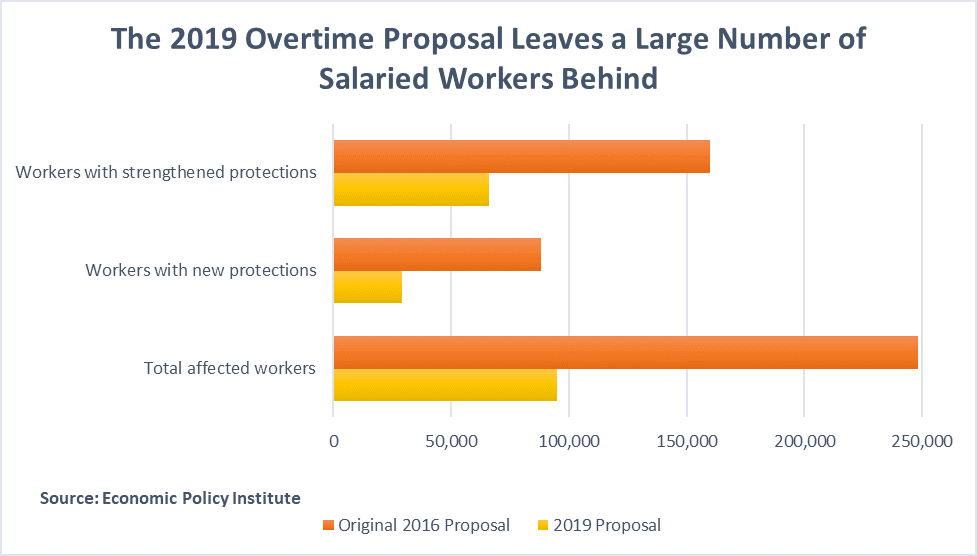Proposed Overtime Rules Would Leave Behind Thousands of Maryland Workers
A recently proposed change to federal rules guiding when workers must be paid overtime does not go far enough, protecting less than half as many workers as a 2016 attempt to update the outdated standards.
Federal overtime protections under the Fair Labor Standards Act were established in 1975 in order to ensure that people working more than 40 hours a week were paid 1.5 times their pay rate for the extra hours. However, the original rules exempted several classifications of employees from its overtime provisions, including salaried workers who made above a certain income and are deemed to have executive, administrative, or professional duties.
The law was originally intended to exempt only highly paid, white collar workers, and to ensure that people get fair wages for their work. However, the salary threshold has not been updated since it was first put in place, so it has not kept up with rising wages in the intervening decades. As a result, the current salary threshold – as little as $455 per week – is less than the poverty threshold for a family of four. That means tens of thousands of Marylanders working for low or moderate salaries are not eligible to receive overtime pay, even when they work extra hours. In 1975, more than 60 percent of full-time salaried workers earned below the threshold. By 2016, the share of workers covered had dropped to less than 7 percent.
In 2016, the U.S. Department of Labor announced regulations that would have strengthened overtime protections nationwide by raising the exemption threshold to $47,476 per year. This rule would have significantly increased the number of people who qualify for overtime pay, and allowed one-third of salaried workers nationwide to earn overtime, the same share as in 1980. In Maryland, 233,000 workers who together put in more than 17 million hours of unpaid overtime each year would have benefited from the rule. Ultimately, a federal court put the regulation on hold.
Under the Trump Administration, the Department of Labor has now proposed a far weaker overtime update with an exemption threshold of only $679 per week, or about $35,000 for a full-year worker. A new report by the Economic Policy Institute found that the new overtime rule leaves out 154,000 Maryland workers who would have benefited from the Obama administration’s 2016 rule—60,000 who would have gained new protections and more than 90,000 who would have had stronger protections.
The Trump rule leaves behind more than 8 million workers nationwide. Additionally, the proposal does not provide for automatic updates as wages continue to grow, meaning that the number of workers left behind is expected to grow significantly during the first 10 years of implementation.
Sufficient overtime protections are more important now than ever. The most direct way Maryland can provide fair pay to low-wage workers, and reduce overwork, is to adopt our own version of the 2016 federal overtime rule. In the current legislative session, Maryland legislators have so far passed up a key opportunity to implement such a rule that would have raised the salary threshold to $900 per week, or $46,800 per year. Raising the salary threshold to more closely match the 2016 rule would guarantee hundreds of thousands of Maryland workers fair pay for long hours, and go a long way to restoring Maryland’s core labor standards.

